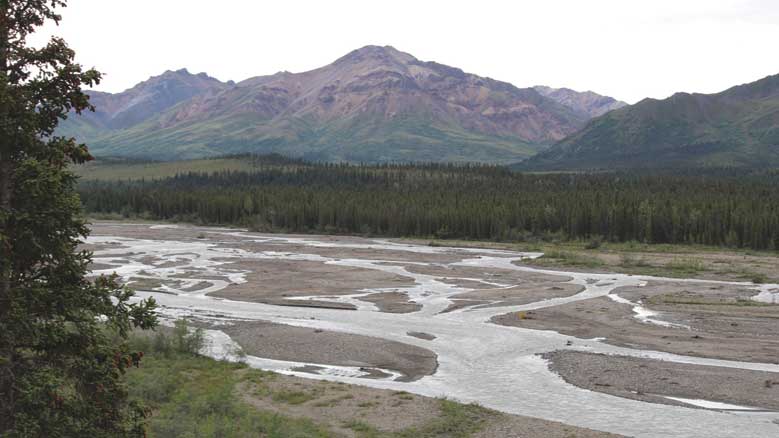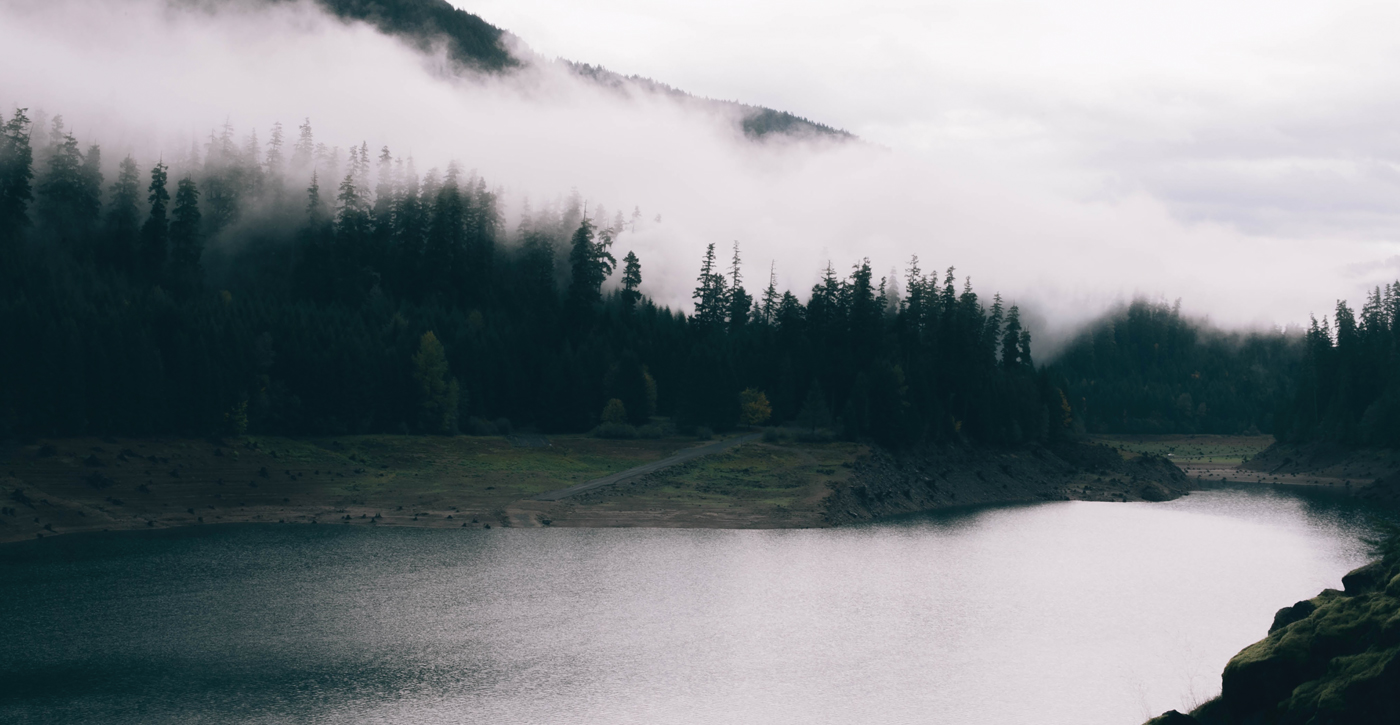
One of the distinctive features of the Alaskan landscape is the intertwining braids of its mountain rivers. Rain and snowmelt flow onto large gravel beds created by ancient retreating glaciers and combine with silty glacial meltwaters to make rivers that look like separate, intertwining creeks. Clear, fresh waters combine with gray-blue silty glacial melt in a swirl of movement and immense beauty. These braided rivers serve as watering holes for bears, caribou, moose, and the other animals that roam freely in central Alaska’s vastness.
I’ve come to see my pathway to Quaker spirituality and my witness on climate change as a braided river. It combines several originally distinct but now connected concerns: peace, justice, and earthcare. The braid that makes up my first connection with Friends came about through my work in the peace and disarmament movements, first as a political organizer working on disarmament issues and later as an opponent of the First Gulf War. A second braid appeared as I became familiar with Quaker testimonies and discovered my natural affinity with the Friends testimony on equality. As a child of the movements for civil rights and women’s rights, I felt at home with this witness of Friends in the world. A third braid became evident through worship. I recognized that in a gathered meeting, the deep mystical connections we feel with each other and with Spirit are akin to the spiritual connections I feel with the natural world. I sense a feeling of oneness, especially in the wild beaches and mountains in coastal California, where I live.
These three themes—peace, justice, and earthcare—have braided together in my life. They have manifested in my past work on the board of EarthLight magazine and more recently, in service on the boards of Quaker Institute for the Future (QIF) and Quaker Earthcare Witness (QEW). In December 2013, I became QEW’s general secretary, charged with growing and maintaining our network of North American Friends carrying a concern for our human interconnection with the environment.
The issue of our century is climate disruption. How can we expect to live in peace and justice in the face of global warming and climate chaos? Our work on climate disruption brings together the traditional Quaker concerns for peace and justice with our growing concern for earthcare. The most extreme effects of climate chaos will affect the world’s poorest and most vulnerable people, as well as tens of thousands of species. For example, by 2050 it is expected that 18 million Bangladeshis will be displaced as climate change refugees due to sea level rise. Diminished freshwater resources have triggered violence in Syria and Darfur, and climate disruption could set off violence in a range of global hotspots.
As a scientist, part of my reason for dedicating this time in my life to working on this issue stems from my awareness of the following:
- The amount of carbon already in the atmosphere will continue to cause worsening climate change for many years to come.
- The best scientific evidence shows that 80 percent of the carbon fuels now in the ground must stay there if we are to succeed in preserving a livable planet.
- Fossil fuel companies continue to plan to extract as much fossil fuel as they can, even while some of the remaining fuel is especially dangerous to extract and significantly more polluting.
Our spiritual connection to the natural world and our earthcare witness is the growing edge for Friends. We are beginning to sense that there that of God not only in everyone, but also in every thing. All of nature deserves our awe, respect, and gratitude. We Friends will grow spiritually as we deepen our connection to the natural world. With greater scientific understanding of how Earth functions, we are already learning how to live sustainably. But it is our growing spiritual connection with the natural world that will allow us to act on this ecological knowledge and create a livable planet.
This past summer I visited two yearly meetings that chose themes linked to earthcare, climate change, and living sustainably for their annual sessions. They met in wildly different settings. Alaska Friends Conference’s geography spans subarctic tundra and vast expanses of open space. Its economy is oil-dominated, and its geology is marked by seismically active mountain ranges. Southern Appalachian Yearly Meeting and Association (SAYMA) meets in a subtropical climate among lush tree-covered rolling hills. It is home to longtime settlement and a formerly coal-dominated economy. Friends in both yearly meetings know that they are living in their own piece of paradise, and are grateful to live amongst such beauty and bounty. Each meeting seeks a way to witness in the world on earthcare. Friends recognize the enormity of the struggle to provide a livable planet in the face of unprecedented climate change, and desire to find an equitable way to share Earth’s resources.
We do not have all the solutions needed to limit climate disruption and live sustainably. We know we must change our lifestyles. We must conserve energy, engage in less-energy intensive and more spiritually fulfilling activities, and adopt energy efficient technologies. Some of these paths are known, and some are still being developed. However, the bigger question remains: do we have the social, political, and economic will to change? We will need spiritual transformation to free us to change how we connect to the natural world.
Imagine a world where we spend more time exchanging stories, cultivating gardens, listening to the wind, and caring about each other. For myself, I can’t wear that fossil fuel sword anymore. That is why I have committed myself to work on creating an economy free of fossil fuels.




This is a comment from Ruah Swennerfelt, former General Secretary of Quaker Earthcare Witness (wife of Louis Cox–but FJ can only recognize one email address per subscriber household–so far).
Thanks Shelley for this excellent article. I appreciate the metaphor of the braids. Yes, we and nature all have intricate braids which make up our whole selves. It’s taken a long time for Friends to understand the interconnections of caring for people and caring for Earth. I hope we read many more articles in the future which develop this theme of interconnections. I pray for a day when all people have food, shelter, and hope and Earth is once more in balance.